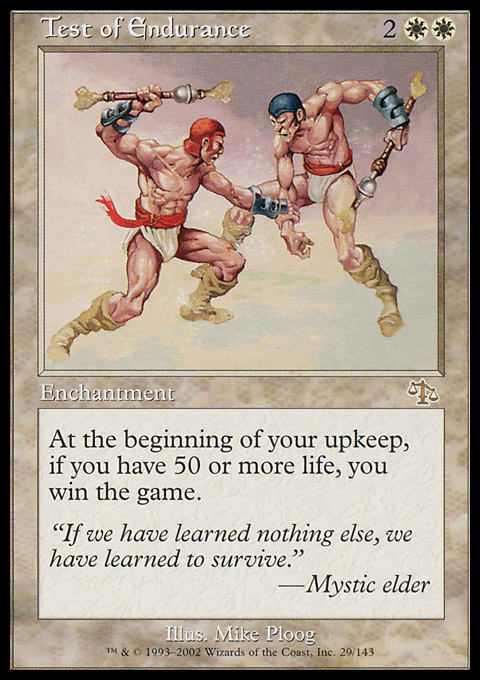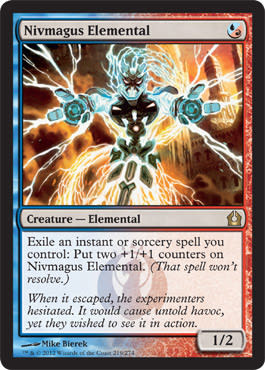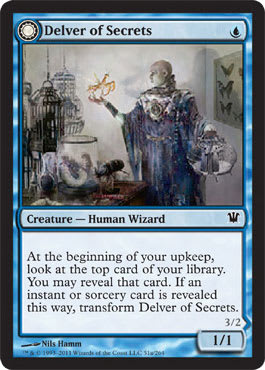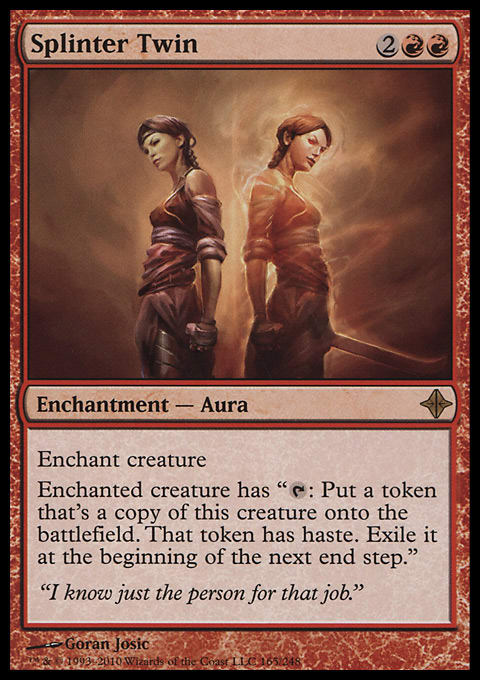Hey there! Last week, I wrote about Pro Tour: Return to Ravnica, concentrating mainly on the tournament and not so much on how we prepared for the event or why I played Twin of all decks. I thought giving a bit of insight into the testing process would be helpful for those of you looking to work on your tournament preparation. You don’t have to be preparing for the Pro Tour for this to be helpful—you can equally well use the things I write about to become ready for a Pro Tour Qualifier or a tournament at your local games store.
Finns at the Pro Tour
During the previous year or so, I’ve played four Pro Tours, Worlds, and the World Magic Cup in addition to some number of Grand Prix tournaments. I’ve prepared for these almost exclusively with other Finnish players going to the same tournaments, so there has been no testing group that would have been the same from tournament to tournament. We’ve ranged from three people to a full eight people or so, so it’s a big difference depending on how many have been qualified at the time. For Grand Prix tournaments, I’ve mostly just tested on Magic Online, as people are not that interested in coming together to test just for a Grand Prix.
The thing I would like to point out here is that the size of your testing group is not necessarily as important as some people might think. The important thing is that you spend your time in a smart way and have good ideas. We were a full seven Finns qualified for Pro Tour: Honolulu earlier this year, partially thanks to the Planeswalker Points system, as we only have one real PTQ in Finland each season. PTQs have been gathering a lot of interest lately, with the previous one actually receiving seventy-five players, more than the venue could accommodate. This might not seem like much to people in some regions, but we’ve had PTQs with twenty players just a few years ago (side note: If anyone from Wizards is reading this, we would really like some more PTQs!). Even though we were seven players doing the testing, I feel our preparation was not very good. During the PT, I realized I should have tested more, especially with the deck I ended up playing (G/W Humans). In Seattle, we were just three people, but I feel we did a much better job preparing, and I really felt we had a good grasp of the format. Perhaps we were even better prepared than some of the much bigger testing groups.
Why is this? How is it possible to do a worse job preparing even though there are more people putting in the actual work? These are some of the things I’ll try to tackle in this article.
Goals
When approaching testing, it’s really important to recognize your goals and what you are trying to achieve. We’ve often fallen into the trap of just jamming games and not thinking very much about what we are trying to accomplish. This is in a way fine, as just getting in games can be good when you are trying to get into that right mindset of playing Magic. Here are some questions I feel are good to ask yourself before starting the actual testing process.
- What is possible in this format? Are there any combo decks?
- What is this format all about? Aggro? Control? Midrange?
- What does the metagame look like right now, online or in real-life events (if a metagame exists)?
- Is there potential for big innovations?
These are questions that don’t even take into consideration what’s going on at the actual Pro Tour, as that is considered in the next level of questions.
- What will the metagame look like at the Pro Tour?
- What decks will be more or less represented than in the current metagame? What decks will people avoid playing because it is a Pro Tour?
I think a good example of the second question is the Soul Sisters deck in Modern. The deck has been really popular online, but for the Pro Tour, I was quite sure it would be a really small part of the metagame. It is just the kind of deck that people really avoid playing at the Pro Tour even though it might actually have been a fine choice. Certain archetypes seem to make people feel awkward in a way because they want to play the “pro choice” and not some silly life-gain deck. I was also expecting less R/G Tron than online, mainly because that has been the trend at Modern events recently, such as the two previous Grand Prix tournaments. This I don’t have a good reason for—the deck is really good in my opinion, and it’s not a deck people would shy away from by default as they might Soul Sisters. However, this was the feeling I had before the Pro Tour, and I felt it was quite correct.
75, not 60
Sideboarding is something that is really neglected during the testing process. Paulo Vitor Damo da Rosa wrote an article on the Pro Tour in which he mentioned they did play sideboarded games but didn’t actually build the fifteen-card sideboard. This meant there was often a big bias in the matchup, as you had more cards to bring in than you normally would. This just goes to show that even the best testing groups in the world don’t always do things perfectly or the way you should. We’ve often been equally guilty of neglecting sideboarding. For example, I think in Honolulu, we played close to zero games post-sideboard, and we mainly just theory-crafted our way to the final fifteen cards.
What I mentioned about questions applies here as well, as it is important to try to understand the matchup and the dynamics. Here are some questions regarding sideboarding.
- What can I take out? Which cards are actively bad in this matchup, and which are otherwise okay to take out if I have better cards?
- What should I be prepared for—can I skip some matchups completely and add more cards for other matchups?
- Is card X good enough, or do I actually need card Y?
A good example of the last question was when we were testing Scapeshift decks against affinity. We knew we wanted some number of cards that were good against aggro, and we were trying to decide between Firespout and Obstinate Baloth. The Obstinate Baloth could come in against Jund, a deck against which Firespout is quite bad, but Firespout seemed better against affinity. We played about twenty games with a split card in our deck that could be either Firespout or Obstinate Baloth. We kept score of how many times we played one of the two and how many times the other one would have been “good enough” and how many times it would have been just bad. We came to the conclusion that the Obstinate Baloth was just so much worse that we could not really afford to play them instead of Firespouts. What would have been ideal would have been to find out that, yes, Obstinate Baloth was slightly worse, but still good enough in the matchup that it was worth playing in the sideboard due to its ability to do work in more matchups.
In general, finding these cards that are good in many matchups is really hard, but it’s rewarding if you do so. Cards such as Damping Matrix and Stony Silence are good examples, as they are powerful in several matchups. Often when you are looking for multipurpose sideboard cards, you have to run cards that are merely good—discard spells for example—but the aforementioned two cards are real hate cards. When looking for these cards, it’s naturally also important to take into consideration what your deck is trying to do and to try to pick cards that really support your own strategy. A card like Blood Moon might be good against R/G Tron in some decks, such as affinity, but in the Twin deck I played, there was not much point in bringing it in against R/G Tron, as it did not solve the actual problems of the matchup.
Time: It’s Really Not on Our Side
When preparing for a big event like the Pro Tour, the main resource you have to worry about is time. These days, Pro Tours coincide with the release of a new set, meaning you have only a few weeks to test once the full spoiler is released. This timeframe has grown a bit longer now since there are now three weeks between the prerelease and the actual Pro Tour—plus those five days between the full spoiler and the prerelease. The fact that the schedule changed with a week actually has a huge impact since it means there will be an extra week for new decks to show up at real-life events as well as on Magic Online. You also have the chance to draft online, which is super-nice if you are a testing group with fewer than eight people and therefore won’t be able to get in all the real-life Drafts you would want.
Our process during the last year has often been to head over to where the PT is being held on Monday, giving us roughly four days to test on location. We usually do some amount of testing online before we leave, mainly via Cockatrice or some similar software. If possible, we also try to get together in real life, but it’s not always a realistic option if the people qualified live in different areas. For Pro Tour: Avacyn Restored in Barcelona, we did a lot of testing online before leaving and played hundreds of games. We also used voice communication via TeamSpeak, something I really recommend if you have access to a server. Actually being to talk to others while playing makes a big difference even though you might not think so, as it allows you to more easily discuss different lines of play. You can do the same thing via in-game chat, but it is often a challenge to communicate your thoughts quickly while writing.
With regards to time, it’s naturally good to have many people in your testing group, as you have the chance to play more games and gather more data in the same amount of time. However, as I mentioned, even though you are many, it still does not automatically mean you spend that time well.
Pro Tour: Return to Ravnica
So, how did our actual testing process look for Pro Tour: Return to Ravnica? My thought process started quite a bit earlier at the World Magic Cup, where we decided to play R/U/G Delver. You can read more about that here and here. My teammate Sami Haeggkvist played Modern in Team Constructed and said he felt let down by the deck we had chosen, as it felt it was really too fair in a format in which you can do some really unfair things. This led me to thinking I really wanted to play an unfair deck at the PT if in any way possible. I had played quite a lot of Modern during the summer to prepare for the World Magic Cup, so I felt I had a pretty good grasp of the format before Return to Ravnica was released.
Once the spoiler came out, there were not really any spectacular cards for Modern, so I thought that would mean the format would stay roughly the same. I tried brewing a deck around Jarad's Orders and Gifts Ungiven, but it was just too clunky. Abrupt Decay was the only new card I considered to have a big impact, as I totally missed Deathrite Shaman. Before leaving for the U.S., one of the main contenders was R/G Tron, and once our journey started, the first deck we tried was B/U/G infect. At first, it seemed really good, as it totally smashed the Tron deck, but when we tested against Jund, I was less and less convinced. We also tried R/U/G Scapeshift at the time, and as it was able to actually have game against many of the decks we had with us at the time, I started feeling more and more that Scapeshift might be a good choice. Our actual testing was interrupted by Grand Prix: San Jose, and one of our friends back home was constantly trying to convince us to play Splinter Twin.
The gauntlet we tested everything against included mostly Jund, affinity, R/G Tron, W/U midrange, R/W/U Delver, Twin, and infect. We seemed to have most of the big decks covered, with some of the combo decks such as Second Breakfast and storm missing, but we had a pretty good idea of how those matchups played out with many of the decks we tested. While playing, we concentrated quite a lot in trying to understand what the deciding factors are in each matchup and in trying to really see why one deck was winning more than the other.
We continued testing the Scapeshift deck, but the post-board games against many of the top decks left me feeling very insecure. I felt that if people were playing even moderate hate—such as Aven Mindcensor and Blood Moon—things might be tricky. I didn’t even think people would actually play the more powerful hate cards such as Slaughter Games. At this point, there was only one day until the Pro Tour, and I was torn between Scapeshift and Twin. The other two had similar dilemmas, as Markku was deciding between Twin and R/W/U Delver, and Jussi was considering affinity or Scapeshift. I’d like to mention that Jussi has played with affinity in over twelve hundred matches (Daily Events and queues) on Magic Online during the spring and summer. This is an insane number, and I don’t think I’ve ever seen anyone dedicated to playing a single deck to perfection like this. His affinity list was quite special, but I think the experience with playing different versions goes to show he knows what he is talking about. Here is the list he played at the Pro Tour.
"Jussi Tuurinkoski’s Affinity"
- Creatures (22)
- 2 Etched Champion
- 4 Master of Etherium
- 4 Memnite
- 4 Ornithopter
- 4 Signal Pest
- 4 Vault Skirge
- Planeswalkers (2)
- 2 Tezzeret, Agent of Bolas
- Spells (20)
- 4 Galvanic Blast
- 4 Thoughtcast
- 4 Cranial Plating
- 4 Springleaf Drum
- 4 Mox Opal
- Lands (16)
- 1 Island
- 1 Inkmoth Nexus
- 2 City of Brass
- 4 Blinkmoth Nexus
- 4 Glimmervoid
- 4 Darksteel Citadel
- Sideboard (15)
- 2 Ancient Grudge
- 3 Blood Moon
- 2 Dispatch
- 1 Etched Champion
- 2 Grafdigger's Cage
- 1 Krosan Grip
- 4 Thoughtseize
The idea here is that the opponent can almost always answer the first assault, especially in sideboarded games. Therefore, it’s important to keep up the pressure and not play too many of the cards that are terrible top-decks. You still need a certain number of the core cards to make the deck function properly. Tezzeret, Agent of Bolas was just insane in many of the matchups we tested, and I’m surprised that it’s not more popular in Modern.
In the end, both Markku and I ended up playing Splinter Twin with very similar lists. Here is my list again, for reference. Many thanks to Matti Kuisma for the original list and ideas regarding the deck.
"Splinter Twin"
- Creatures (12)
- 3 Pestermite
- 4 Deceiver Exarch
- 2 Spellskite
- 3 Kiki-Jiki, Mirror Breaker
- Spells (25)
- 1 Mizzium Skin
- 2 Spell Snare
- 3 Remand
- 4 Dispel
- 1 Mizzium Mortars
- 2 Gitaxian Probe
- 4 Serum Visions
- 4 Sleight of Hand
- 4 Splinter Twin
- Lands (23)
- 1 Mountain
- 4 Island
- 1 Breeding Pool
- 1 Stomping Ground
- 4 Misty Rainforest
- 4 Scalding Tarn
- 4 Steam Vents
- 4 Sulfur Falls
- Sideboard (15)
- 3 Blood Moon
- 2 Sowing Salt
- 2 Grafdigger's Cage
- 2 Ancient Grudge
- 2 Vendilion Clique
- 2 Flame Slash
- 1 Wurmcoil Engine
- 1 Mizzium Skin
The one main-decked Mizzium Mortars was against the Soul Sisters deck, as the card singlehandedly wins the first game. A Soul Sisters player can often bring out enough of the Soul Warden effects that you can’t actually combo-kill him. However, with Pestermite and Splinter Twin or Kiki-Jiki, Mirror Breaker, you can make infinite flying blockers and stay alive, assuming you draw something for the couple of Path to Exile the deck runs. Then, it’s just a matter of drawing the Mizzium Mortars at some point and killing all his guys and then killing him. Mizzium Skin was something we came up with just a few days before the Pro Tour, and it was much better than Vines of Vastwood. If anyone is interested in reading a more in-depth analysis on Twin, be sure to let me know in the comments section, and I’ll try to make it happen.
Even though the actual tournament did not go that well, I was still pleased with the deck choice, and had I gone to Grand Prix: Lyon, I would probably have played a very similar list there. I was especially happy I didn’t choose the Scapeshift deck, as beating all the hate would surely have been tough. Playing the same affinity list that Jussi did would probably have been the best choice, but I’m really not a huge fan of the deck in general, and switching to it without having played many games seemed to be a bad idea at the time.
This was quite a lengthy article, so many thanks to those of you who had the energy to read this far. If you have any questions or comments, be sure to chime in, either via Twitter or the comments section below. I’m not totally sure what the topic for next week’s article will be, but be sure to stay tuned!
Thanks for reading,
Max
@thebloom_ on Twitter
Maxx on Magic Online
You can find my music on: http://soundcloud.com/bloomlive




























